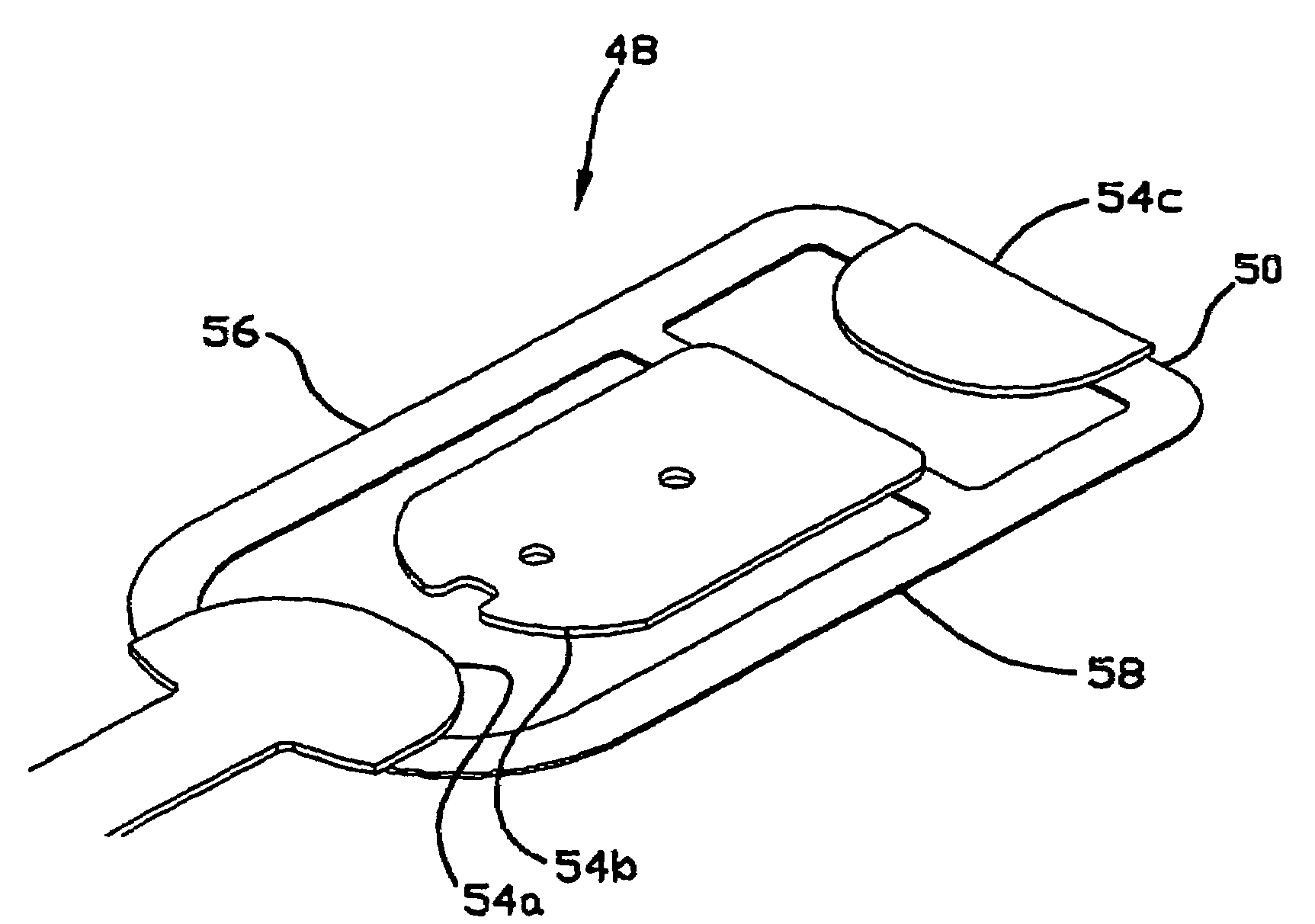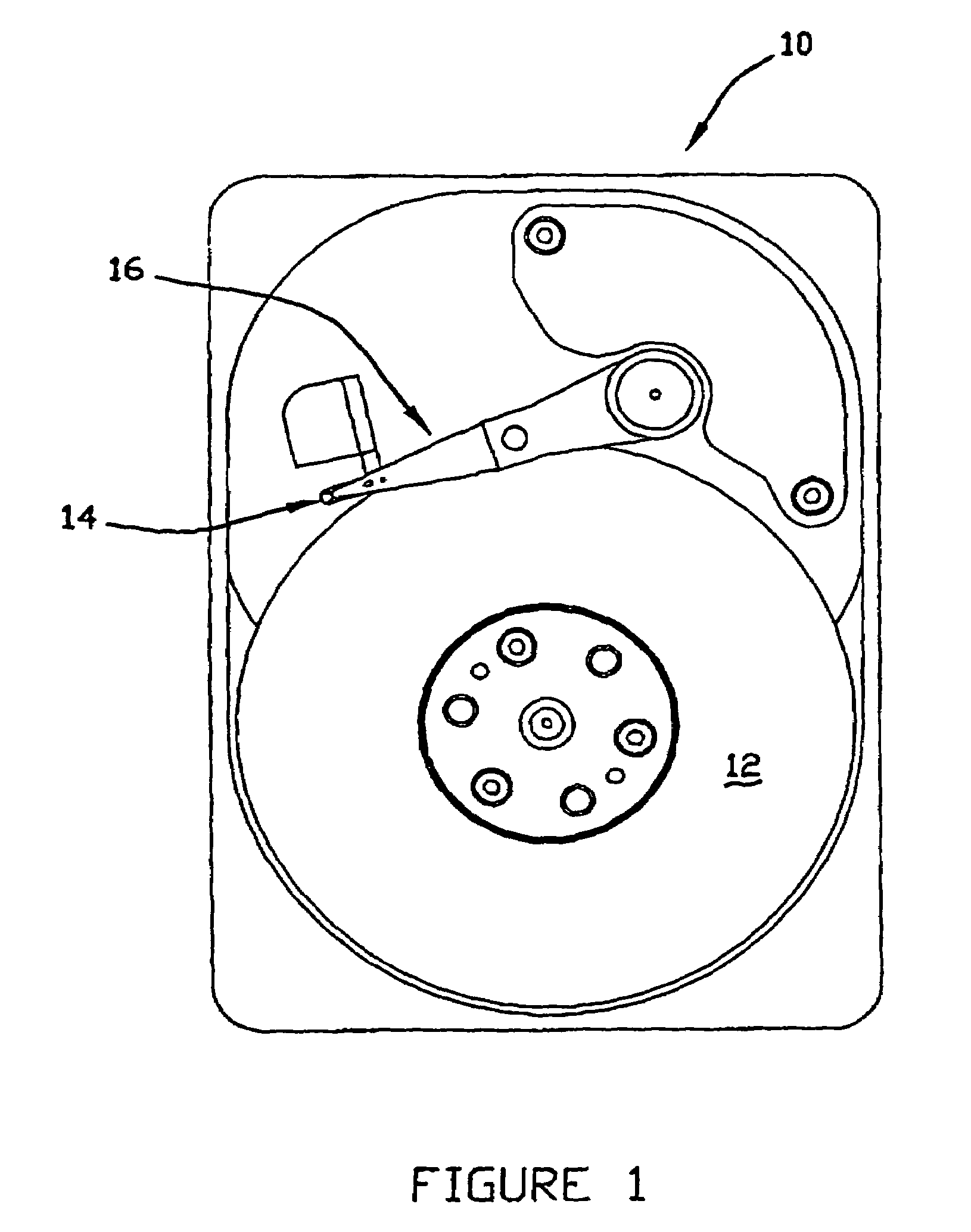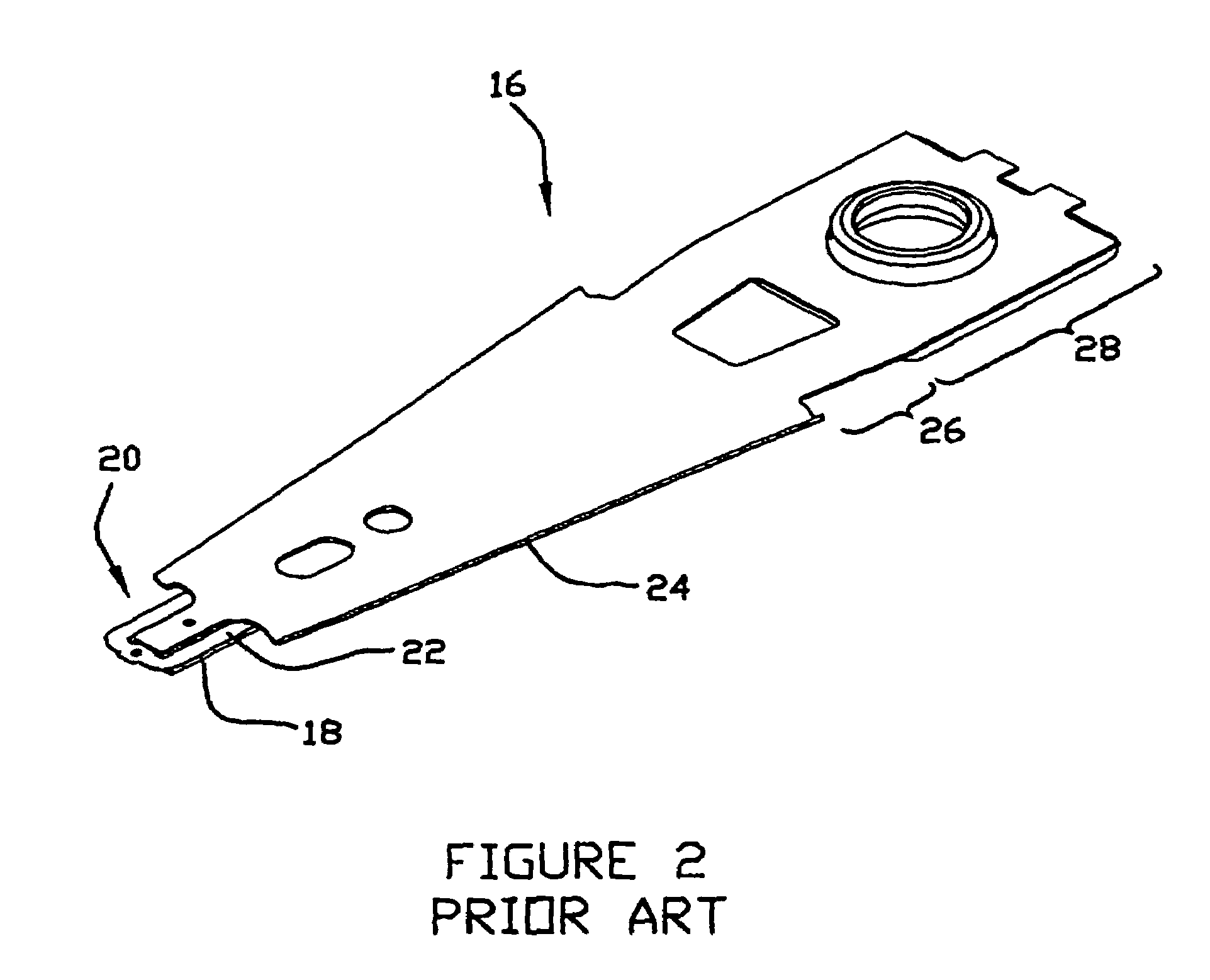Low stiffness gimbal for disk drive head suspensions
- Summary
- Abstract
- Description
- Claims
- Application Information
AI Technical Summary
Problems solved by technology
Method used
Image
Examples
Embodiment Construction
[0029]Referring now to the figures, and most particularly to FIG. 1, a disk drive assembly 10 to which the gimbal and load beam of the present invention is directed may be seen. Disk drive assembly 10 has a rotating disk 12 and a read / write head 14 carried by a head suspension 16 for reading data from and writing data to disk 12.
[0030]Referring now also to FIGS. 2 and 3, the head suspension 16 has a head slider 18 carried by a gimballing mechanism 20 which is typically included on a flexure 22. Gimbal 20 is carried by a load beam 24 which typically has a spring region 26 and a mounting region 28. The mounting region is typically secured to a baseplate 30. The spring region provides a force, called “gram load” in a direction to urge the head slider 18 towards disk 12. In operation, an air bearing elevates the head slider 18 above the disk 12 and it is preferable that the gimbal 20 has low pitch and roll stiffness (to enable low flyheight) and high lateral stiffness (to enable faster ...
PUM
 Login to View More
Login to View More Abstract
Description
Claims
Application Information
 Login to View More
Login to View More - R&D
- Intellectual Property
- Life Sciences
- Materials
- Tech Scout
- Unparalleled Data Quality
- Higher Quality Content
- 60% Fewer Hallucinations
Browse by: Latest US Patents, China's latest patents, Technical Efficacy Thesaurus, Application Domain, Technology Topic, Popular Technical Reports.
© 2025 PatSnap. All rights reserved.Legal|Privacy policy|Modern Slavery Act Transparency Statement|Sitemap|About US| Contact US: help@patsnap.com



